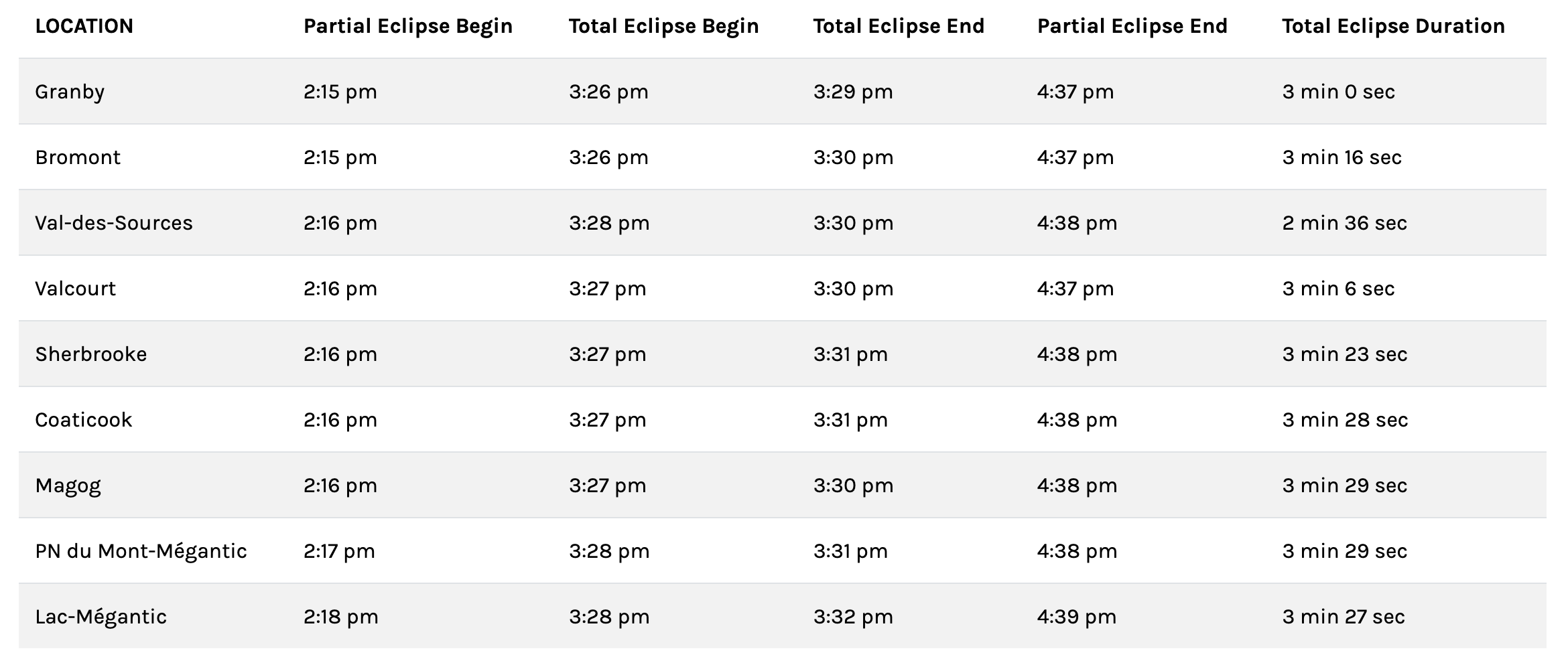French astronomer talks coming solar eclipse
By William Crooks
Local Journalism Initiative
Bishop’s University will hold a free Donald Lecture on Thursday, April 4, at 7:30 p.m., featuring Professor Jean-Louis Heudier, a distinguished astronomer and author from the Côte d’Azur Observatory in France, who will be speaking about eclipses. In his lecture, titled “Fantastic Eclipses, From Fear to Reason,” he will delve into how humanity’s views on eclipses have evolved from fear to fascination. The Townships region is set to enjoy a rare total solar eclipse in the afternoon on Monday, April 8.
“It’s important to talk first about the moment of surprise the eclipse will cause,” Heudier said in an interview over the phone with The Record April 3. Humans and animals will be “perturbed,” he said, with humans asking “what is going on?” and animals getting confused and perhaps settling down to sleep. Panic may set in, he warned.
The eclipse will begin with a partial phase, he explained. “It will be spectacular when half of the Sun is eaten by the Moon,” he said. It will take about an hour until the sun is “completely eaten.” For a few minutes the sun will entirely disappear.
Once the sun is gone, it will quickly become night. Stars will be visible. It will take another hour for the Moon to move out from in front of the Sun. The whole process will take about two hours.

From our vantage point in the Townships, the Moon will be very slightly larger than the Sun in the sky, so the eclipse will be total. Eclipses sometimes occur when the Moon is further away, so the Sun is not completely covered, giving the Moon a spectacular halo.
“Solar eclipses for a given location are rare,” he explained. The shadow caused by an eclipse only covers “a few hundred kilometers.” The shadow moves a few kilometers per second over the Earth. “You are very lucky this year,” he said. Every year around the world there are at least two solar eclipses.
A total solar eclipse revisits the same location roughly every 375 years on average, while a total lunar eclipse, or Blood Moon, becomes visible from any given location about once every 2.5 years. Every century, approximately 240 solar eclipses and a similar number of lunar eclipses occur.
One needs to be right under the shadow to see anything. He said a few dozen kilometers away it will be as if nothing is happening. The eclipse will cause a slight drop in temperature and may kick up a little wind. He said even if it is cloudy, it will still become like it is nighttime.
“It will be a magical moment, extraordinary!” he said, and wished everyone a “Good eclipse!”


